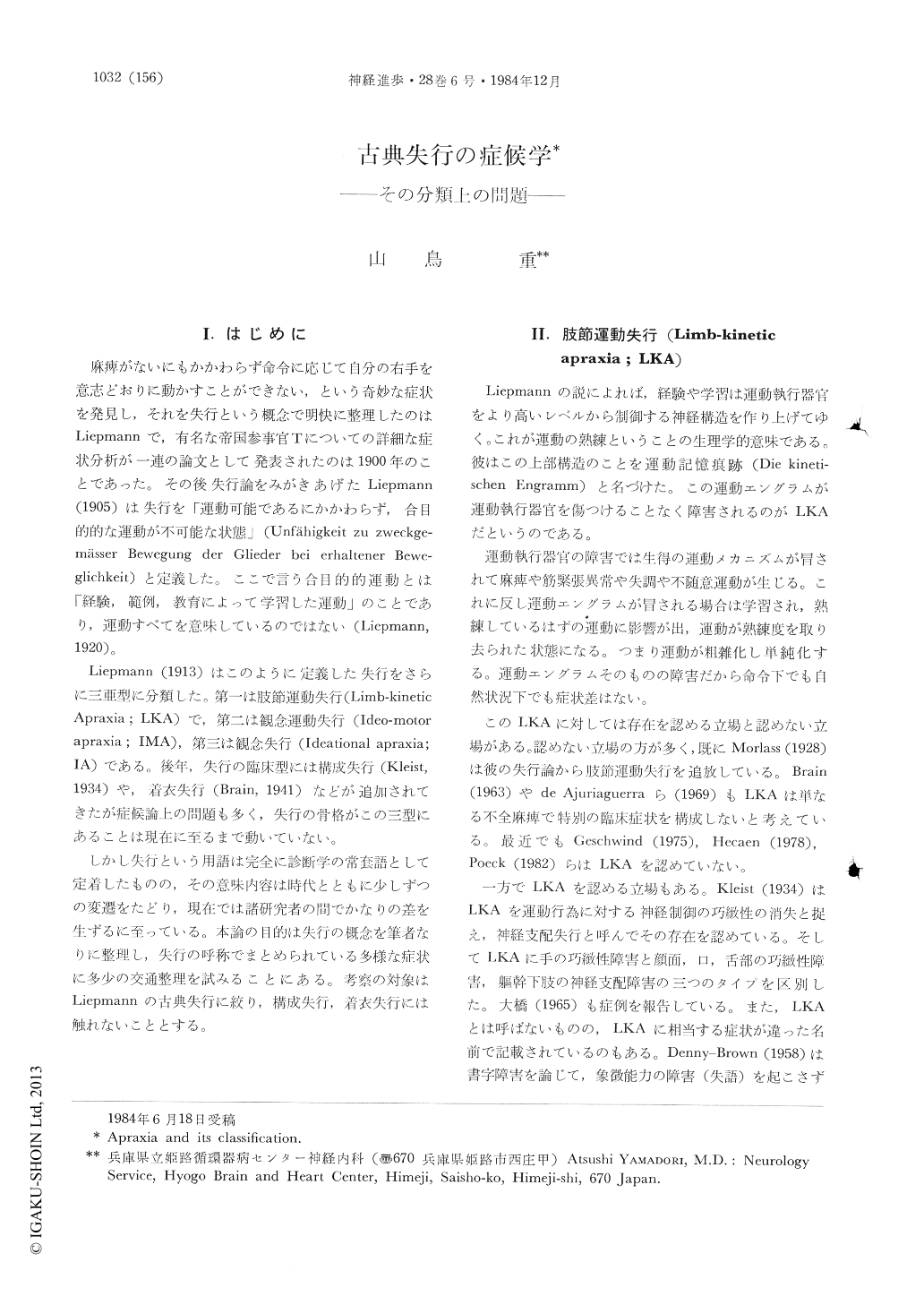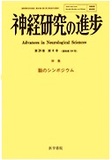Japanese
English
- 有料閲覧
- Abstract 文献概要
- 1ページ目 Look Inside
I.はじめに
麻痺がないにもかかわらず命令に応じて自分の右手を意志どおりに動かすことができない,という奇妙な症状を発見し,それを失行という概念で明快に整理したのはLiepmannで,有名な帝国参事官Tについての詳細な症状分析が一連の論文として発表されたのは1900年のことであった。その後失行論をみがきあげたLiepmann(1905)は失行を「運動可能であるにかかわらず,合目的的な運動が不可能な状態」(Unfahigkeit zu zweckgemasser Bewegung der Glieder bei erhaltener Beweglichkeit)と定義した。ここで言う合目的的運動とは「経験,範例,教育によって学習した運動」のことであり,運動すべてを意味しているのではない(Liepmann,1920)。
Liepmann(1913)はこのように定義した失行をさらに三亜型に分類した。第一は肢節運動失行(Limb-kinetic Apraxia;LKA)で,第二は観念運動失行(Ideo-motorapraxia;IMA),第三は観念失行(Ideational apraxia;IA)である。後年,失行の臨床型には構成失行(Kleist,1934)や,着衣失行(Brain,1941)などが追加されてきたが症候論上の問題も多く,失行の骨格がこの三型にあることは現在に至るまで動いていない。
It is Liepmann who has founded the basis of apraxia study. He defined apraxia as a disorder of purposive movement against the background of preserved movability. It is important to note that this category of purposive movement is not all inclusive. It is limited to such movements that are acquired through example, experience and education. Thus, apraxia is a disorder of "learned" movement.
Liepmann further divided apraxia into three subgroups on theoretical basis ; (1) limbkinetic apraxia, (2) ideomotor apraxia and (3) ideational apraxia.

Copyright © 1984, Igaku-Shoin Ltd. All rights reserved.


